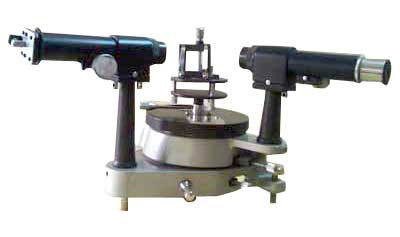Refraction


·
 |
Refractive index, n is a measure of the relative speed of light in that material compared to a vacuum. A vacuum has n=1 and air, n=1.0003 (we normally take this to be 1 as well)
· It can be found using Snells Law:

![]()


·
 |
a generalization of this formula to deal with light moving between different materials – not just air and something else gives:
Total Internal Reflection (T.I.R.)
 |


Optical Fibres
![]()
![]()

· the refractive index of the glass fibre (the ‘core’) must be higher than that of the plastic coating (the ‘cladding’) for total internal reflection to occur
· This type of optical fibre is called a step-index fibre because the refractive index increases in a step from the air on the outside, to the much higher value of the cladding, to the even higher value of the core.
· The problem with step index fibres is multipath dispersion. It is possible for light to take a number of different paths through the cable so a signal sent from through will be slightly spread out.
· The solution is to make the core much narrower compared to the cladding (or to have the refractive index of the core varying gradually to a peak in the middle)
· If optical fibres touch each other, crosstalk can occur. This is where light would refract form one fibre into the next. The cladding prevents this but if e.g. water leaks into the cable this is still possible.
·  Uses of optical fibres include communications and
medical endoscopes
Uses of optical fibres include communications and
medical endoscopes
![]() In an endoscope, bundles of fibres are used. They must be coherent –
the fibres must be in the same position at each end in order for the picture to
make sense.
In an endoscope, bundles of fibres are used. They must be coherent –
the fibres must be in the same position at each end in order for the picture to
make sense.

Double Slit Interference (Young’s Slits)
· this experiment demonstrates the wave nature of light
· when a coherent light source is shone through an arrangement of 2 slits a distinctive pattern of light and dark fringes is observed:

 |
the explanation for this is that the path difference for light form one slit to any point on the screen is different than for light from the other slit
· this means the light rays meet on the screen in different phases depending on the position
· where they meet in phase we observe a bright fringe, where they meet out of phase we observe a dark fringe
· constructive interference occurs at bright fringes
· destructive interference occurs at dark fringes
 |

 |
Single Slit Diffraction

· The reason for the fringes is the same as with double slit diffraction – except now the reason for the interference is that the distance from one side of the single slit to any point on the screen is different to the distance from the other side of the slit
· The central bright fringe is twice as wide as the others which are much dimmer




Diffraction Gratings

- Many slits together are called a diffraction grating
![]() - When light diffracts through this, the bright fringes get sharper
with larger dark gaps between
- When light diffracts through this, the bright fringes get sharper
with larger dark gaps between
![]() - Each bright fringe is called an ‘order of
diffraction’ measured from 0 which is the centre
- Each bright fringe is called an ‘order of
diffraction’ measured from 0 which is the centre
- The difference between using monochromatic and white light can be seen below:
 |


 |
Spectra
· Diffraction gratings are used in spectrometers to produce spectra because they diffract the light by different angles depending on its wavelength

